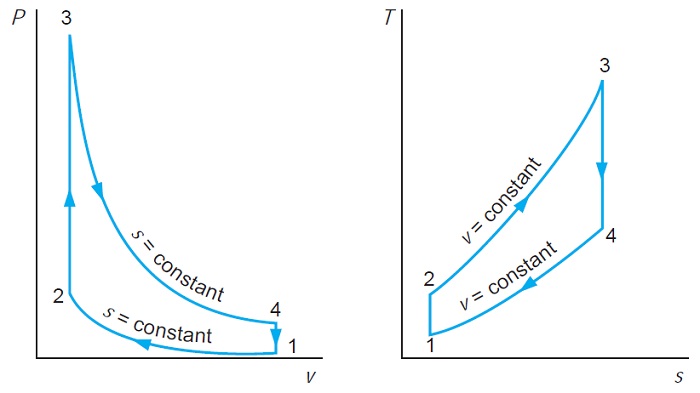Lets say both engines operate between same temperature limits.
Carnot eff: $$ e_\text{Carnot} = 1-\frac{T_L}{T_H} $$ Otto eff: $$ e_\text{Otto} = 1-\frac{T_4-T_1}{T_3-T_2} $$ assuming that for Otto cycle points are located as below on a P-V diagram: $$ \array{ 3 & 4 \\ 2 & 1 } $$ I assumed the following for the Temperature limits. \begin{align} T_3&=T_H \\ T_1&=T_L \end{align} Question is: is there any way that the Otto cycle can be more efficient than the Carnot? (If e.x. $T_4$ will be close to $T_1$ enough, so the numerator of the Otto efficiency will become zero. Then the Otto cycle is more efficient, but as far as I know the most efficient is Carnot)
Please also suggest how to use the $T_4$ and $T_2$. (or get rid of them to calculate eff)

